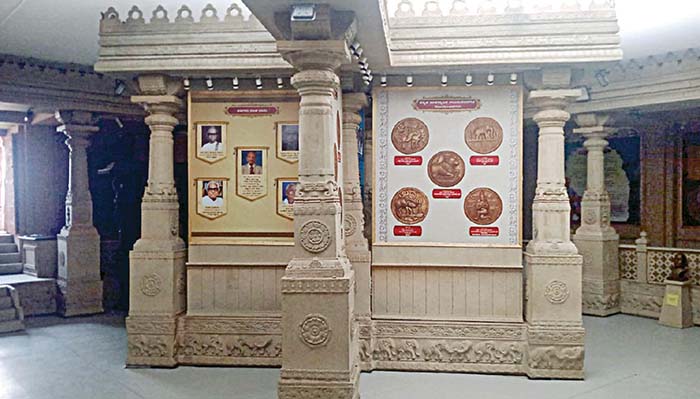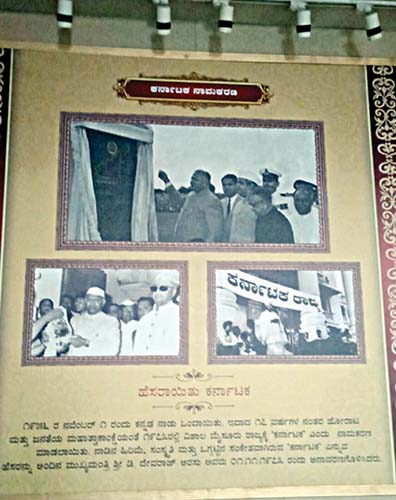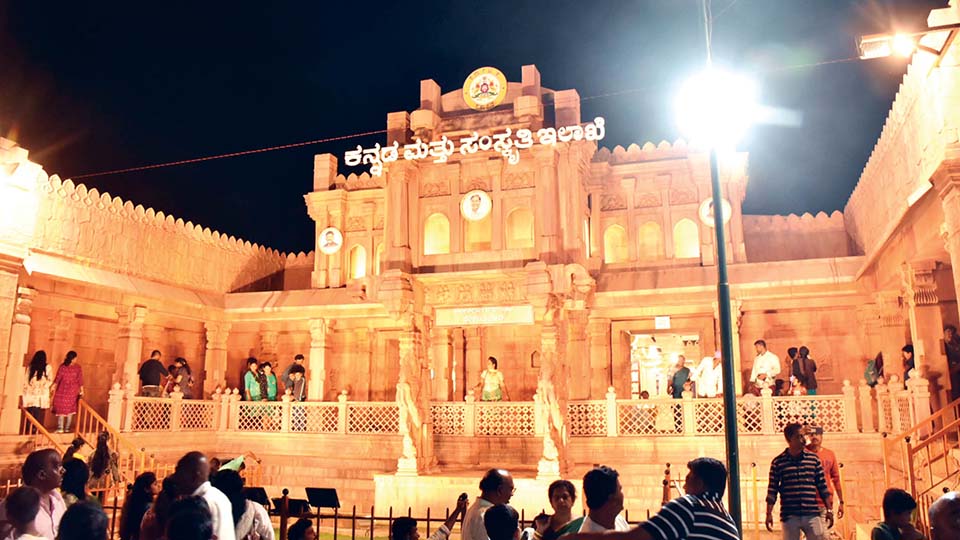Historical journey from Mysore State to Karnataka
The historical relics, inscriptions, royal insignias and occasions prior to renaming of the State as Karnataka have been finely displayed in the form of photographs at the stall of Kannada and Culture Department
Mysuru: While Karnataka celebrates ‘Karnataka Sambhrama-50’ to commemorate 50 years since the State was renamed as Karnataka, the rich heritage of this land is vividly showcased, captivating visitors at the Dasara Exhibition Grounds in the city.
The stall of the Kannada and Culture Department offers a compelling reflection of the State’s art, literature, culture and historical heritage, enriching the grandeur of this region. The entrance features a replica of ‘Venkatappa Bavi,’ a testament to the architectural brilliance of the Vijayanagara rulers, instilling a sense of pride that endures.
The Kannada-speaking regions were united to form Vishala Mysore Rajya (Mysore State) on Nov. 1, 1956. This historic moment is captured in a photograph showcasing then-President of India,Babu Rajendra Prasad, Governor Jayachamaraja Wadiyar and Chief Minister S. Nijalingappa.

Twelve years later, on
Nov. 1, 1973, the State was officially renamed ‘Karnataka,’ a moment memorialised in a photograph where Chief Minister Devaraj Urs unveils a plaque bearing the new State name.
Detailed information, supported by photographs, illustrates the changes before and after the unification of Karnataka, regional folk arts that continue to thrive, forest areas and wildlife in the State. The exhibit also showcases architectural details of historical monuments, including those from the Vijayanagara and Ganga eras and various regions of the State.
A dedicated section features the ‘Halmidi Inscription,’ believed to be the first Kannada inscription, emphasising its historical significance. The exhibit highlights various firsts in Karnataka’s history in a dedicated section titled ‘Kannadada Modala Hemme,’ including Mayura Varma, the first Kannada king; the Kadamba dynasty, the first rulers of Karnataka; Pampa, the first Kannada poet; and Akkamahadevi, the first poetess.

Information on the symbols and insignias of the royal families that once ruled the State is presented, followed by ‘Kavigala Kanda Nadu,’ which profiles poets, recipients of the ‘Karnataka Ratna’ award, Jnanpith award-winning Kannada authors and recipients of the Bharat Ratna award from Karnataka.
The exhibition also honours achievers in fields such as sports, music and more, celebrating their invaluable contributions. Additional boxes within the exhibition pay tribute to Nalwadi Krishnaraja Wadiyar, the former ruler of Mysore, affectionately known as ‘Rajarshi.’ His life journey, governance, contributions and social reforms are detailed, accompanied by an impressive photograph of the late Maharaja.
‘Venkatappa Bavi,’ also known as ‘Queen’s Bath,’ is described as a regal bath constructed by Venkatappa Naik during the Vijayanagara kingdom’s reign. With its four entrances and intricately carved pillars, this monument stands as a testament to architectural excellence.
By M.B. Pavan Murthy








Recent Comments